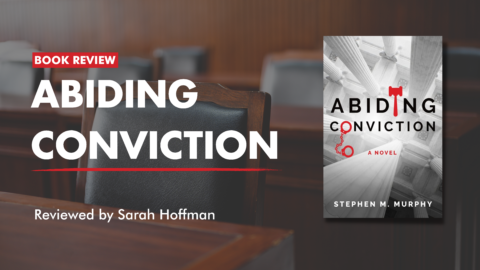Like many lawyers, Vicki Trapalis is called upon to deal with other people’s trauma on a daily basis. She works in San Francisco’s dependency court, representing children who have been through unimaginable horrors.
Recently, she got a desperate call from the foster mother of a five-year-old boy who had been sexually abused by his mother’s boyfriend. The foster mom was at the end of her rope on a Friday night after a week of dealing with the boy’s behavior issues at school and at home brought on by his abuse. Just when Trapalis thought the boy had turned a corner because he’s now in a safe place, she found herself worrying he would lose his new home. She listened for an hour as the mother vented her frustrations.
“All I said to her is, ‘You’re not in this alone.’” Trapalis reassured the foster mom that she would call the school and get an appointment scheduled with someone who could help. That seemed to help.
Trapalis has a rewarding job. But what makes the job rewarding can also make it stressful. She desperately wants to help her clients fix their lives. But at the same time, she knows that in order to do her job well, she can’t let the trauma impact her own mental health. As a result, she’s learned to constantly check in with herself to make sure she’s setting appropriate boundaries.
According to the U.S. Department of Health & Human Services Administration for Children & Families, compassion fatigue, or secondary traumatic stress, is a “natural but disruptive by-product of working with traumatized clients.” Its symptoms—including feelings of isolation, anxiety, dissociation, physical ailments and sleep disturbances—mirror post-traumatic stress disorder (PTSD).
Trapalis has discovered some techniques she can use to protect herself from secondary trauma, admittedly with varying degrees of success. She has also done trainings on vicarious trauma for the Bar Association of San Francisco’s Justice & Diversity Center to help people recognize the signs and find what works for them.
Getting out in nature, spending time with family or practicing mindfulness can work, as long as it’s “something that nurtures your soul and releases some of that worry,” she said.
For Trapalis, relief often comes in the form of a furry black cuddler named Daphne. Trapalis agreed to foster the cat after taking a year-long sabbatical to help refugees in Greece. Soon, Daphne—rescued from a homeless encampment—became her permanent companion.

“Sometimes I think if I can just get home to my cat I’ll be OK,” she said. Something as simple as watching Daphne play with a shoestring will bring her back to reality. “Watching her innocent reaction gives me a reality check.”
In the trainings, Trapalis encourages people to adopt coping mechanisms that are simple and easy. Otherwise, something that’s supposed to help is liable to become one more item on the to-do list.
Judi Cohen, a Berkeley Law lecturer and the founder of Warrior One Mindfulness in Law Training, said lawyers in many different practice areas can be vulnerable to secondary trauma.
Someone doing immigration work lives with the fear that their client might be deported. Those practicing family law are confronted with people who are grieving the end of their marriages. Even in corporate law, there can be a tremendous amount of emotion on the other side of the table.
Cohen said she started to feel the impact of law practice after about ten years, saying, “It really had the potential to dysregulate me and make me feel like I was on high alert all the time. I could say yes every time and take on more and more and more, but I had this sense internally I was never quite doing enough. I could always do more. I could always be better and more perfect.”
When she discovered mindfulness training, Cohen learned that the kind of thinking she was trained to do as a lawyer was helpful for spotting issues and handling client work. But it was important to let go of that in other parts of her life where it didn’t serve her.
“I could shift to a calmer, less activated, more regulated state of mind,” Cohen said. Mindfulness practice allows you to see what’s happening with your mind so you can shift to a healthier state of mind when that’s available.
Lawyers who develop a mindfulness practice can draw on it when they find themselves faced with trauma.
“What’s coming at me may be anger or sorrow. Screaming or crying,” she said. “We don’t separate ourselves but we learn not to take on the suffering of someone else. Our responsibility is to learn these tools and integrate them into the way we are so we lead with kindness and compassion and interconnection.”
About the Author
Laura Ernde is a San Francisco-based communications consultant. She has covered legal affairs for more than a decade, as a journalist and former editor of the California Bar Journal.



